Related Research Articles

Ziziphus mauritiana, also known as Indian jujube, Indian plum, Chinese date, Chinese apple, ber, and dunks is a tropical fruit tree species belonging to the family Rhamnaceae. It is often confused with the closely related Chinese jujube, but whereas Z. jujuba prefers temperate climates, Z. mauritiana is tropical to subtropical.

Papilio demoleus is a common and widespread swallowtail butterfly. The butterfly is also known as the lime butterfly, lemon butterfly, lime swallowtail, and chequered swallowtail. These common names refer to their host plants, which are usually citrus species such as the cultivated lime. Unlike most swallowtail butterflies, it does not have a prominent tail. When the adult stage is taken into consideration, the lime swallowtail is the shortest-lived butterfly, with male adults dying after four days and females after a week. The butterfly is a pest and invasive species, found from Asia to Australia. The butterfly has spread to Hispaniola island in the Western Hemisphere, and to Mahé, Seychelles.
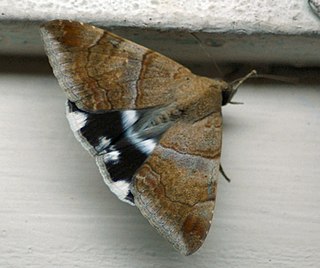
Achaea janata, the castor semi-looper or croton caterpillar, is an erebid moth, the caterpillars of which are termed 'semi-loopers' due to their mode of locomotion. It is found from the Indo-Australian tropics and subtropics, extending south to New Zealand and east through the Pacific archipelagoes to Easter Island. It is a major pest of castor throughout the world.
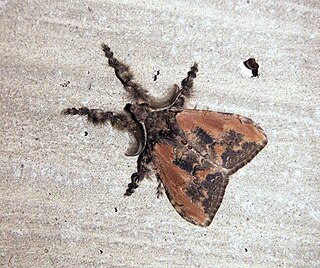
Olene mendosa, the brown tussock moth or hairy tussock moth, is a moth of the family Erebidae. The species was first described by Jacob Hübner in 1823. It is found in India, Bangladesh, Sri Lanka, Indonesia, Taiwan, Thailand and Australia.
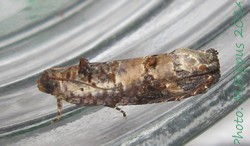
Dudua aprobola, the mango flower webworm or litchi leaf roller, is a moth of the family Tortricidae. The species was first described by Edward Meyrick in 1886. It is a pest on several economically important crops.
Archips micaceana is a moth of the family Tortricidae. It is found in China, Hong Kong, southern Vietnam, Burma, and northern Thailand. It is a minor pest of many agricultural crops.
Indarbela quadrinotata, the bark-eating caterpillar, is a moth in the family Cossidae. It is found in India and Sri Lanka. It was described by Francis Walker in 1856.
Artaxa guttata is a moth of the family Erebidae first described by Francis Walker in 1855. It is found in Bangladesh, Sri Lanka, and India.
Sphrageidus xanthorrhoea is a moth of the family Erebidae first described by Vincenz Kollar in 1848. It is found in India, Sri Lanka, Java and Indonesia. It was once classified under the genus Euproctis, where it is accepted by some authors.
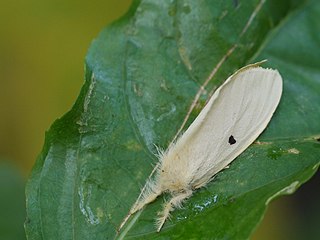
Euproctis lunata, the castor hairy caterpillar, is a moth of the family Erebidae. The species was first described by Francis Walker in 1855. It is found in India, Pakistan, Sri Lanka and Thailand.

Euproctis latifascia is a moth of the family Erebidae first described by Francis Walker in 1855. It is found in India, Sri Lanka and Taiwan.
Euproctis rhoda is a moth of the family Erebidae first described by Frederic Moore in 1879. It is sometimes classified as a subspecies of Euproctis howra. It is found in India, Sri Lanka, Myanmar, the Andaman Islands and Australia.
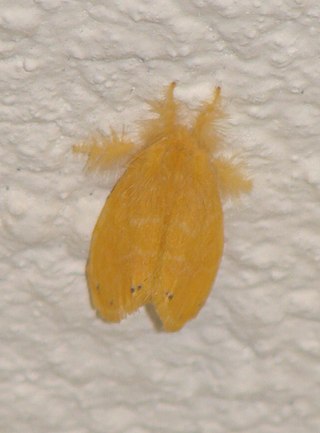
Euproctis varians is a moth of the family Erebidae first described by Francis Walker in 1855. It is found in India, Sri Lanka, the Maldives, Celebes and China.
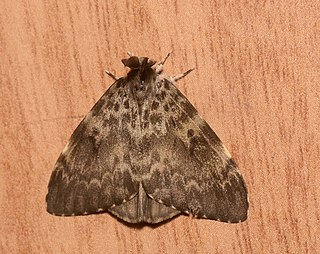
Lymantria ampla is a moth of the family Erebidae first described by Francis Walker in 1855. It is found in India and Sri Lanka.
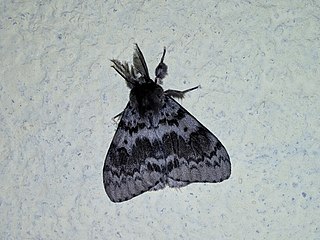
Lymantria incerta is a moth of the family Erebidae first described by Francis Walker in 1855. It is found in India and Sri Lanka.
Comibaena cassidara is a moth of the family Geometridae first described by Achille Guenée in 1857. It is found in Sri Lanka, India, Nepal, Pakistan, China, Thailand, Philippines, Malaysia, Singapore and Borneo.
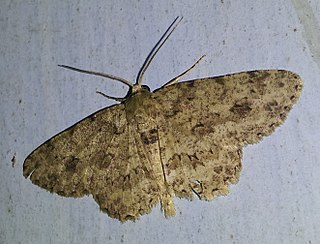
Ectropis bhurmitra, the tea twig caterpillar, is a moth of the family Geometridae. The species was first described by Francis Walker in 1860. A widespread Asian species, it is found around Indo-Australian tropics from India, Sri Lanka and Hong Kong, Taiwan, Thailand, New Guinea to Australian Queensland and the Solomon Islands.
Petelia medardaria is a moth of the family Geometridae first described by Gottlieb August Wilhelm Herrich-Schäffer in 1856. It is found in the Indian subregion, Sri Lanka, Malaysia, Borneo, Queensland and the Bismarck Islands.

Cheromettia apicata is a moth of the family Limacodidae first described by Frederic Moore in 1879. It is found in Oriental tropics such as Sri Lanka and India.
Adoretus versutus, commonly known as rose beetle, is a species of shining leaf chafer found in Afro-Oriental tropics.
References
- ↑ "Species Details: Euproctis fraterna Moore, 1883". Catalogue of Life. Retrieved 7 March 2018.
- ↑ Koçak, Ahmet Ömer; Kemal, Muhabbet (20 February 2012). "Preliminary list of the Lepidoptera of Sri Lanka". Cesa News (79): 1–57 – via Academia.
- ↑ Savela, Markku (ed.). "Euproctis fraterna (Moore, [1883])". Lepidoptera and Some Other Life Forms. Archived from the original on 11 March 2016. Retrieved 8 October 2018.
- ↑ "Biological control planned to eradicate hairy caterpillar pest in Seychelles". Seychelles News Agency. Retrieved 7 March 2018.
- ↑ "Crop Protection:: Oil Seeds:: Pest of Castor". TNAU. Retrieved 7 March 2018.
- ↑ "Management of Hairy Caterpillar, Euproctis fraterna Moore of Jujube, Ziziphus mauritiana Lam" . Retrieved 7 March 2018.
- ↑ "Euproctis fraterna, Maldives". PestNet. Retrieved 7 March 2018.
- ↑ "Euproctis fraterna larval foodplants". Lepidoptera HOSTS. Retrieved 7 March 2018.
- ↑ "Pests of Castor:: Major Pests:: Hairy Caterpiller -1". eagri.org. Retrieved 7 March 2018.